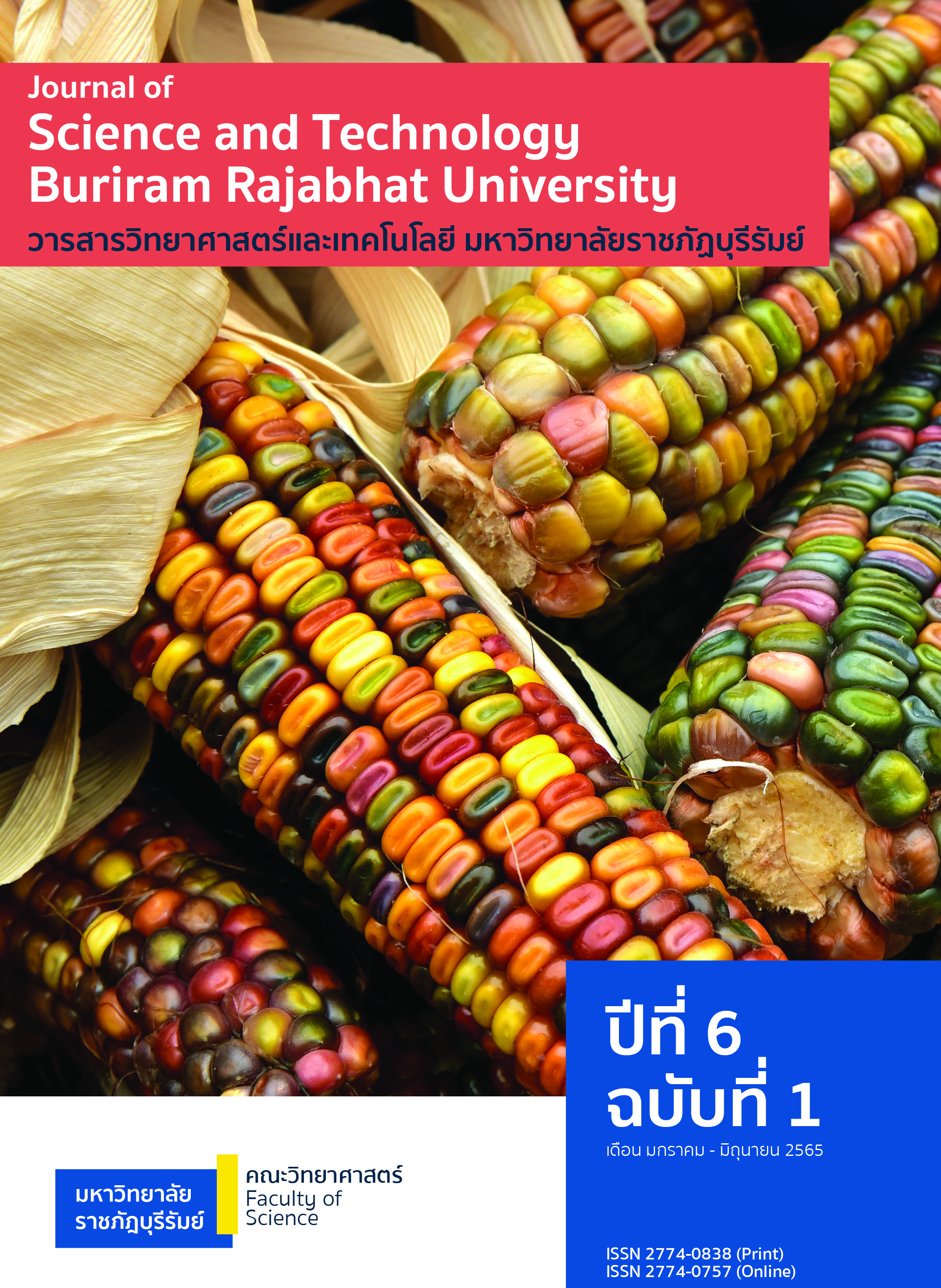การเปรียบเทียบความรู้และพฤติกรรมเรื่องการป้องกันตนเองของเกษตรกรในการใช้สารเคมีกำจัดศัตรูพืชของวัยรุ่นและผู้ปกครองที่ประกอบอาชีพเกษตรกรรม บ้านสะแกซำ ตำบลสะแกซำ อำเภอเมืองบุรีรัมย์ จังหวัดบุรีรัมย์
Main Article Content
บทคัดย่อ
การเปรียบเทียบความรู้และพฤติกรรมการป้องกันตนเองในการใช้สารเคมีกำจัดศัตรูพืชของวัยรุ่นและผู้ปกครองที่ประกอบอาชีพเกษตรกรรม กรณีศึกษา บ้านสะแกซำ ตำบลสะแกซำ อำเภอเมืองบุรีรัมย์ จังหวัดบุรีรัมย์ เป็นการวิจัยกึ่งทดลอง (Quasi - Experimental Research) เพื่อเปรียบเทียบความรู้และพฤติกรรมการป้องกันตนเองของเกษตรกรในการใช้สารเคมีกำจัดศัตรูพืชของวัยรุ่นและผู้ปกครองที่ประกอบอาชีพเกษตรกรรม บ้านสะแกซำ ตำบลสะแกซำ อำเภอเมืองบุรีรัมย์ จังหวัดบุรีรัมย์ กลุ่มตัวอย่างจำนวน 60 คน โดยแบ่งเป็นกลุ่มควบคุมและกลุ่มทดลองอย่างละ 30 คน ใช้เครื่องมือแบบสอบถามความรู้และพฤติกรรมการป้องกันตนเองในการใช้สารเคมีกำจัดศัตรูพืช ของกองโรคจากการประกอบอาชีพและสิ่งแวดล้อม กรมควบคุมโรค กระทรวงสาธารณสุข วิเคราะห์ข้อมูลโดยใช้ค่าร้อยละ ค่าเฉลี่ย ส่วนเบี่ยงเบนมาตรฐาน และ t-test ผลการวิจัยพบว่าความรู้และพฤติกรรมการใช้สารเคมีกำจัดศัตรูพืชของวัยรุ่นและผู้ปกครองที่ประกอบอาชีพเกษตรกรรมแตกต่างกันอย่างมีนัยสำคัญทางสถิติ กลุ่มทดลองมีความรู้มากขึ้นและมีพฤติกรรมดีขึ้น ด้วยค่าเฉลี่ย 6.40 (SD = 0.80) และ 33.87 (SD=1.50) จากก่อนทดลอง 3.07 (SD= 0.81) และ 16.50 (SD=1.86) กลุ่มตัวอย่างมีความรู้และมีพฤติกรรมการป้องกันตนเองในการใช้สารเคมีกำจัดศัตรูพืชเพิ่มขึ้นอย่างมีนัยสำคัญทางสถิติ (P<0.05) เพื่อแก้ไขปัญหาพฤติกรรมการใช้สารเคมีกำจัดศัตรูพืชของเกษตรกรอย่างมีประสิทธิภาพการศึกษาครั้งต่อไปควรศึกษาให้ครอบคลุมเกษตรกรทั้งตำบลสะแกซำโดยการมีส่วนร่วมจากหน่วยงานที่เกี่ยวข้อง
Article Details

อนุญาตภายใต้เงื่อนไข Creative Commons Attribution-NonCommercial-NoDerivatives 4.0 International License.
เนื้อหาและข้อมูลในบทความที่ลงตีพิมพ์ในวารสารวารสารวิทยาศาสตร์และเทคโนโลยีถือเป็นข้อคิดเห็นและความรับผิดชอบของผู้เขียนบทความโดยตรงซึ่งกองบรรณาธิการวารสาร ไม่จำเป็นต้องเห็นด้วย หรือร่วมรับผิดชอบใด ๆ
บทความ ข้อมูล เนื้อหา รูปภาพ ฯลฯ ที่ได้รับการตีพิมพ์ในวารสารวารสารวิทยาศาสตร์และเทคโนโลยีถือเป็นลิขสิทธิ์ของวารสารวารสารวิทยาศาสตร์และเทคโนโลยีหากบุคคลหรือหน่วยงานใดต้องการนำทั้งหมดหรือส่วนหนึ่งส่วนใดไปเผยแพร่ต่อหรือเพื่อกระทำการใด ๆ จะต้องได้รับอนุญาตเป็นลายลักษณ์อักษรจากวารสารวารสารวิทยาศาสตร์และเทคโนโลยี ก่อนเท่านั้น
เอกสารอ้างอิง
Buriram Provincial Officer. (2021). Buriram Province Information. Retrieved 12 Mar 2022, from www.buriram.go.th/downloads/buriram-gen.pdf.
Yimthin, C., Cheentam, S. and Veerawatnanond, V. (2018) Effects of applying chemical usage reduction model on knowledge, awareness, and behavior in chemical consumption reduction. RMUTSB Acad. J. (HUMANITIES AND SOCIAL SCIENCES), 3(2), 229-240.
Department of Agriculture. (2019). Measures to limit the use of 3 substances (paraquat, glyphosate,
chlorpyrifos. Retrieved 28 Aug 2021, from http://oard3.doa.go.th/kalasin/wp-content/
uploads/2019/02/มาตรการจำกัดการใช้-3.pdf
Department of Disease Control, Ministry of Public Health. (2016). Pesticides and their effects on health. Retrieved 28 Aug 2021, from http://envocc.ddc.moph.go.th/contents/view/106.
Department of Disease Control, Ministry of Public Health. (2020). Situation report Surveillance operation, prevention disease control and health hazards for informal workers of the year 2020. Retrieved 28 Aug 2021, from https://ddc.moph.go.th/uploads/publish
/1139520210507084901.pdf.
Vejpanich, J., Det, K., Waratah, W. and Pimjai, P. (2015). The Outcomes of Training in a Practicum Prevention of Chemical Pesticides by Agriculturists in Nakhon Pathom Province. Christian University Journal, 21(2), 215-230.
Chantaramanee, N. (2017). Behaviors of Chemical Pesticides Uses and The Effectiveness of an Occupational Health Education Program of Safety Knowledge among Farmers in Upriver Area, Phayao Province. Journal of Safety and Health, 10(37), 35-45.
Charoensuk, N. (2016). Effectiveness of Safety Training Program in Presticides Utillzation of Farmer in Donchedi Destrict, Suphanburi Province. Naresuan University Journal, 24(1), 91-101.
Piromjit, P. and Paileelee, S. (2014). Knowledge and behavior Use chemical pesticides. Farmers at Ban Na Lao, Na Wang District, Nong Bua Lamphu Province. Journal of development community health, 2(3), 299-309.
Yodchan, S., Suntayakorn, C., Noosorn, N. and Prachanban, P. (2011). Effects of Health Belief Program on Pesticide Prevention Behavior Among the Farmers. Journal of Nursing and Health Sciences, 5(2), 45-54.

